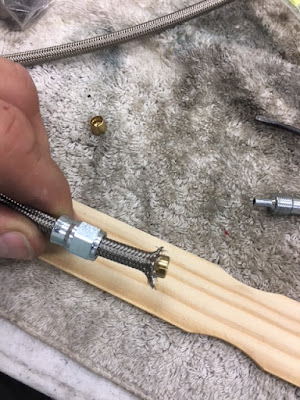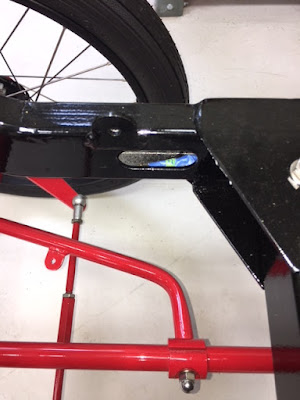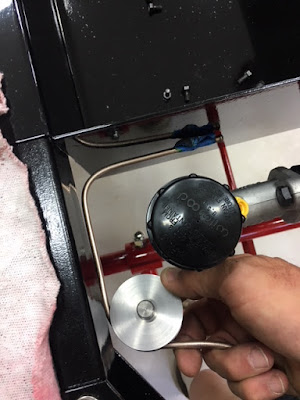
The 1899 Locomobile Steam Car Replica, known as the Lykamobile is a full scale live steam automobile manufactured in 24 kits. This kit is available from a company called "Steam Traction World" located in Daventry, United Kingdom. Each kit is to be manufactured and sent once a month for 24 months. However for cost considerations I have chosen to have my kits batched and dispatched in larger crates to the United States (Topsail Beach, NC).
Specifications:
• Length 7ft 2.6in • Height 5ft 3in • Width 4ft 7.1in • Weight 904 lbs.• Water Tank Capacity 12 Gallons • Fuel Tank Capacity 7.3 Gallons
Construction:
• CHASSIS Tubular steel fabrication, combination weld, bolted and silver solder.
• STEERING “Ackerman” design tiller steering.
• DIFFERENTIAL & DRIVE Spur gear differential similar to the original Locomobile, drive shaft and bearings.
• WHEELS & TYRES Single tube pneumatic, treaded.
• BREAKING SYSTEM Disc brake system.
• ENGINE 21/4" diameter, 3" stroke modified “Hackworth” valve gear.
• WATER FEED Twin mechanical pump.
• BURNER Fuelled by diesel.
• BOILER Multi Fire Tube, fully constructed and complete with necessary paperwork and inspected by notified body.
• BODYWORK & SEATS Wooden with steel frame, seating capacity of 2 persons, with turned decorative spindles with leather style upholstery.
• Gears: forward and reverse.
• Assemble with hand-tools only
• Step-by-step instructions
• Technical service and help-line backup
• Designed on ‘Solidworks’ CAD
• Manufactured on modern CNC machines for build accuracy and high quality
Sunday, June 10, 2018
Lyka Kit #11 Pedal Ass'y-Brake Lines-Master Cyl. Part 3
Thursday, June 7, 2018
Lyka Kit #11 Pedal Ass'y-Brake Lines-Master Cyl. Part 2
I did NOT follow Steam Traction World's recommended lengths. I did cut the first rear wheel brake line per their recommendation at 160 mm, but when I tried to install the line on the left rear disc brake it was too long and would rub the paint on the rear axle tube. Not to worry, I tried the brake line on the right rear wheel and it fit perfectly. I believe that the bulkheads on the axle tube are located slightly differently. The following shows the steps for making a brake line.
Tuesday, June 5, 2018
Lyka Kit #11 Pedal Ass'y-Brake Lines-Master Cyl. Part 1
The kit consists of all the brake pedals, master cylinder, brake lines (pipes), flexible stainless steel braided brake lines, and some of the fittings for the parking brake.
First duty is to straighten the long brake line from being wound up a bit for packaging. Then to feed this brake line through the right side tubular steel frame. Notice that I taped the fitting to the brake line. That didn't work too well and the fitting got loose and slid down into the middle of the frame. A better way was to bend the brake line just enough to hold the fitting from sliding.
Popular Posts
-
As probably like some of the fellow Lykamobile kit builders, I have been studying this kit for sometime now. A Lyka Series 1 builder (jjtjr ...
-
Kit # 15 arrived mid January 2019 while I was away on our annual buying trip to Atlanta for our two retail gift shops here on Topsail Island...
-
Kit # 2 was pretty straight forward. The assembly of the oil impregnated bushings into the steering tube went well. The assembly of the stub...
-
Finally got all those pieces parts painted and cured. Took a little while longer due the winter temperatures. My garage is heated, but it st...
-
Below is an image of what I have found to be one of my most important tools -- a half round needle file. Also used extensively were a ...
-
So September 19, 2015 I discovered the Lykamobile Steam Car through some Google search I did and promptly sent an email to Dean Rogers Direc...
-
I have decided to paint my Lykamobile similar to an 1899 Locomobile that was recently auctioned off by Bonham's this past year. Below ar...






































































